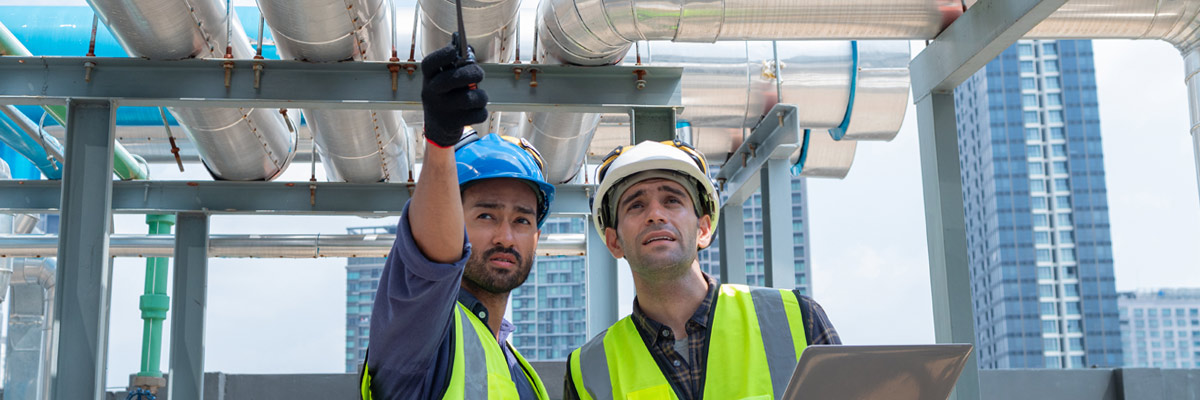The Difference between ERVs & HRVs
In modern building design, mechanical ventilation systems such as Heat Recovery Ventilators (HRVs) and Energy Recovery Ventilators (ERVs) play a critical role in maintaining indoor air quality while optimizing energy efficiency. Both systems utilise air-to-air plate heat exchangers to transfer energy between incoming and outgoing airstreams, but they differ significantly in their functionality and application. This blog explores the technical distinctions between HRVs and ERVs, focusing on the use of plate heat exchangers, and provides guidance on selecting the appropriate system based on climate, humidity control needs, and energy efficiency goals.
Technical Overview
Heat Recovery Ventilators (HRVs)
- Functionality: HRVs recover sensible heat (temperature) from the outgoing airstream and transfer it to the incoming airstream. They do not transfer moisture.
- Plate Heat Exchanger Design: HRVs typically use fixed-plate heat exchangers made of materials like aluminum or polypropylene. These plates are impermeable to water vapor, allowing only heat to pass between the airstreams via conduction.
- Operation: In winter, warm indoor air preheats cold incoming air; in summer, cool indoor air tempers hot incoming air. The airstreams remain separated, preventing cross-contamination.
- Efficiency: HRVs can achieve sensible heat recovery efficiencies of 60-90%, depending on the exchanger design and airflow conditions.
Energy Recovery Ventilators (ERVs)
- Functionality: ERVs recover both sensible heat and latent heat (moisture) from the outgoing airstream, transferring them to the incoming airstream.
- Plate Heat Exchanger Design: ERVs use enthalpy plate exchangers, often constructed with hygroscopic or polymer membranes that allow moisture to permeate while still separating the airstreams. This enables both heat and humidity transfer.
- Operation: In winter, ERVs transfer heat and moisture from humid indoor air to dry outdoor air; in summer, they remove moisture from humid outdoor air, reducing the load on air conditioning systems.
- Efficiency: ERVs typically achieve total energy recovery efficiencies (sensible + latent) of 50-80%, with the exact value depending on climate conditions and exchanger quality.
Key Differences
| Aspect | HRV | ERV |
| Energy Transfer | Sensible heat only | Sensible heat + latent heat (moisture) |
| Heat Exchanger Type | Impermeable plates (e.g., aluminium) | Permeable enthalpy plates (e.g., polymer membranes) |
| Humidity Control | No moisture transfer | Transfers moisture to balance humidity |
| Climate Suitability | Best in cold, dry climates | Ideal for humid or mixed climates |
| Applications | Temperate regions with minimal humidity concerns | Hot/humid summers or dry winters |
Performance in Plate Heat Exchangers
- HRV Plate Exchangers: The simplicity of sensible-only transfer results in lower pressure drops and higher sensible heat recovery efficiency. However, they lack humidity control, which can lead to overly dry indoor air in winter or excessive humidity in summer.
- ERV Plate Exchangers: The addition of moisture transfer reduces sensible heat efficiency slightly due to the complexity of the membrane but provides total energy recovery. This makes ERVs more versatile in climates with significant humidity fluctuations.
Advantages and Limitations
HRVs
- Advantages:
- Higher sensible heat recovery efficiency.
- Simpler design, potentially lower cost.
- Ideal for cold, dry climates where humidity control is less critical.
- Limitations:
- No moisture management, which can dry out indoor air in winter or fail to mitigate humidity in summer.
- Less effective in humid climates.
ERVs
- Advantages:
- Balances indoor humidity, improving comfort and reducing HVAC loads.
- Versatile across a wide range of climates, especially humid or mixed ones.
- Reduces energy costs associated with dehumidification or humidification.
- Limitations:
- Slightly lower sensible heat recovery efficiency compared to HRVs.
- Higher initial cost due to advanced exchanger materials.
References

